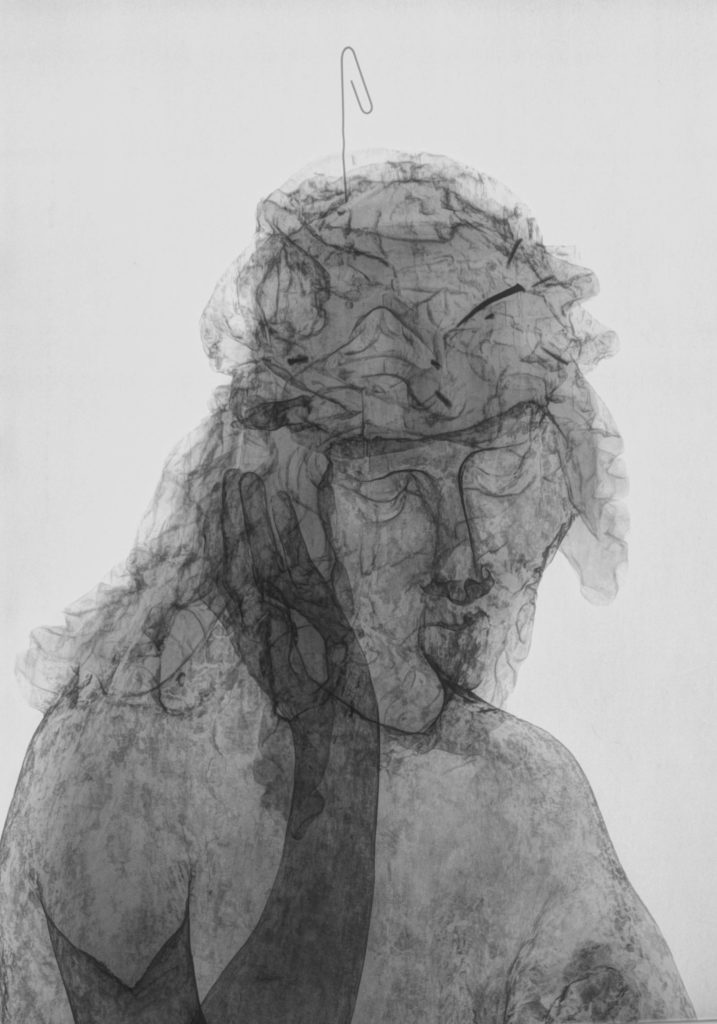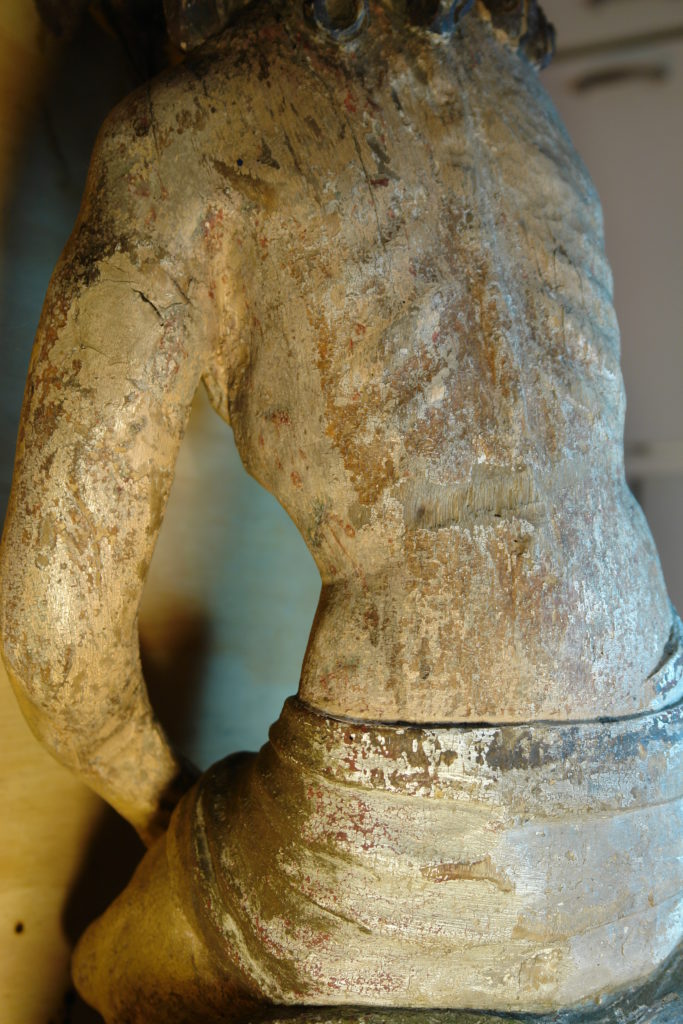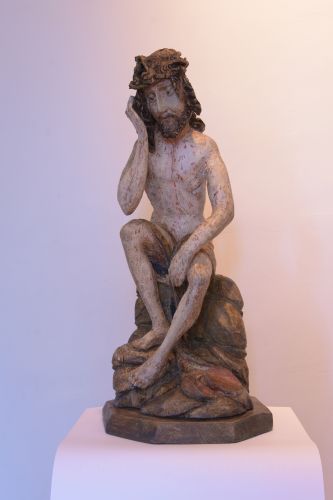Project effects
Church of St. Nicholas – Młodojewo
RENOVATION OF THE TRIPTYCH FROM THE CHURCH OF ST. NICHOLAS IN MŁODOJEWO, CONSTRUCTION DATE 1581-1582
The triptych from the church of St. Nicholas in Młodojewo shows scenes of the Passion and the Resurrection. The painting support and the frames were made of lime wood, and fat tempera technique was used for the paint layer. In the first stage, silhouettes of figures and robes were sketched in dark colour with a brush. During the work, a painter changed the arrangement of elements in a certain degree. The paintings were finished by a means of oil biding agent. It was partially gilded and silvered with spot decorations.


The condition of the triptych gives evidence to previous renovation works, during which polychromy of the frames was unified again in terms of colours, gilding and silvering were complemented with powdered gold and silver leaf. In some places, gilding was worn. The most damaged were the wings of the reverse, which was caused by the contact with the varnish on the panelling. The biggest losses of paint are visible in those panels. There are many cracks and loosenings of mortar in the places where slats join. The original layer of paint is covered with cracks and small losses are visible. The paintings were done with the use of oil binder which had turned yellow. The boards deformed so paintings slightly slide out of the frames.


The aim of conservation and restoration works is to protect the object from further damage and to restore it artistic and display values.
Conservation works started with photographic documentation and description of its state. The most damaged parts were photographed in the UV light. After dismantling, the object was cleaned from surface contamination, and next whitened varnish was removed. Mortar loosenings were glued, and losses of the mortar filled with chalk-adhesive putty.
The original layer of paint was secured by retouch varnish. Gilding and silvering was reconstructed with armenian bole, 23 ¾ karat gold leaf and powdered silver were used. Silvers were secured with shellac. Gilding was mechanically aged and liquid wax bitumen patina was put on them. Retouching of paint layer were made, and then paintings and frames were coated with finishing satin varnish. In the final stage the object was reassembled and as-built documentation was done.

THE PENSIVE CHRIST
The wooden sculpture of the Pensive Christ from the church of St. Nicholas in Młodojewo was made in the 16th century. Taking into account its construction, it is in a good condition, with a few signs of xylophages in the bottom parts and losses in wood structure, among others in the hair fragments, and in the crown of thorns. There are also a thumb in the left hand and a fragment of a stone missing.


On the other hand, the sculpture polychromy preserved in a much worse condition, due to many layers of overpaintings. Each single layer of paint, including oil paints, severely blurred the precision with which the surface had been made and flattened many sculptural details. In some places paint was badly scraped and damaged which exposed raw wood.
The objective of preservation is the prevention of the damage process through renovation and reinforcement of wood and its original polychromy.
Before conservation works started, stratigraphic examination was conducted which revealed that the sculpture was covered in seven technological layers. The following testing were X-ray and UV photography.



The tests did not show original gilding from the 16th century, therefore, its reconstruction was not pursued as the current gilding was unoriginal. Conservation committee decided that the missing fragments of sculpture and polychromy would not be reconstructed. Preventive conservation concept was applied which aimed to secure the object’s substance.


The first stage of preservation works was the support of delaminating fragments of the polychromy primer by the means of an adhesive. Next, unoriginal overpaintings were removed. During the removal of the overpaint from the top of the sculpture’s head, a place was revealed which can most likely be called the depository. It is a type of a small, circular hole closed with a peg. Presumably it is a place where communion wafer was kept (?).


The following works involved securing the sculpture’s stability through reconstruction of the missing fragment at its base and attaching an insert in its left part. The sculpture underwent sterilization. Conservation team decided to unify only a few fragments of polychromy in order to loose a strong contrast (in some places the layer of paint was damaged so severely that raw wood was visible). A thin layer of chalk primer was placed, on which imitative retouching was put. The sculpture was secured with a finishing varnish.



